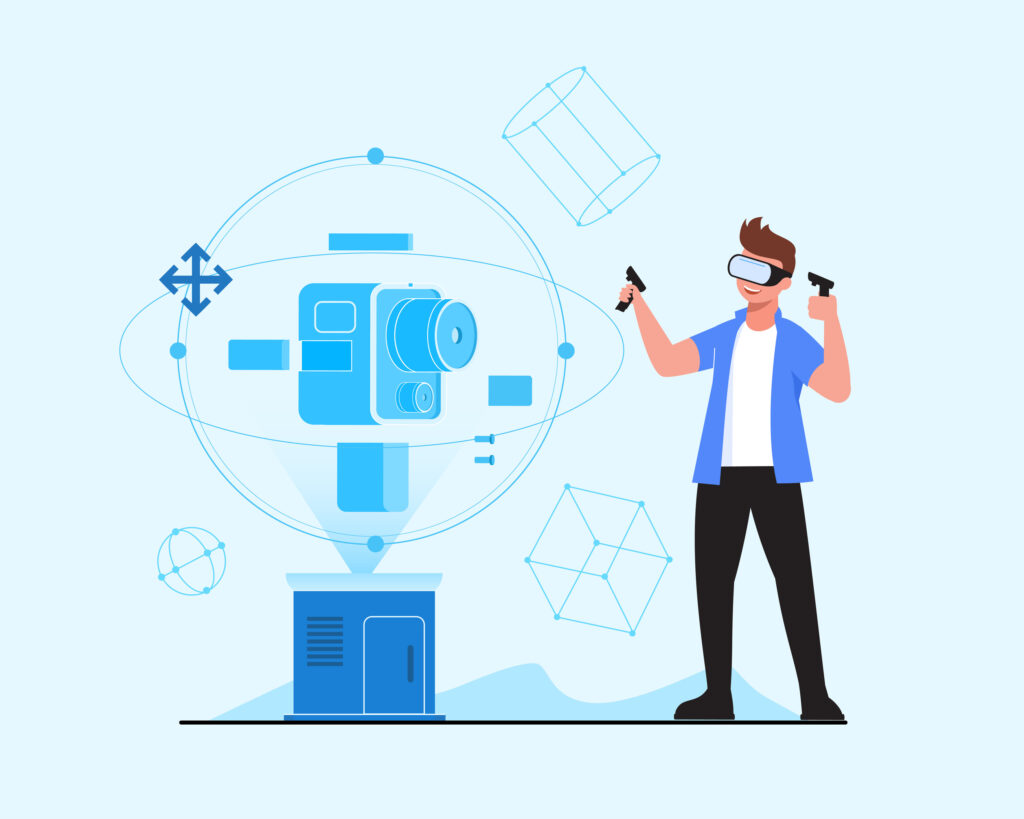
Using Virtual Reality Skill-Assessments
One of the major growing pains for organisations is hiring the right candidates. Skill assessments play a major role in this search for the right candidate. They are crucial in this age of flux and innovations where new age competencies like Cybersecurity, Machine Learning, Artificial Intelligence, Data Science, Business Analytics, Cloud Computing, Internet of Things (IoT), Blockchain, Big Data Engineering and Critical Thinking skills are taking centre-stage.

Accurate skill assessment is also essential to maximise individual and organisational performance. This fosters a positive work environment while achieving long-term success in the ever-evolving workplace. By understanding strengths and identifying skill gaps, organisations can invest in targeted training and development, leading to continuous improvement and growth for both the individual and the company.
VR to the rescue!
Finding the right tools to accurately evaluate skills is a major challenge. That’s where Virtual Reality (VR) comes into play. It uses three-dimensional virtual (programmed) environments to create immersive and interactive experiences. Users can engage with these virtual worlds through specialised headsets and controllers which track their movements and actions. The entire experience provides a sense of realism.
That is why VR is making its way into the world of skill assessments. Here’s how VR can be utilised for skills evaluation:
Technical skills evaluation: Using VR for hands-on technical tasks.
VR simulations can replicate the look, feel, and functionality of actual equipment and tools used in specific technical roles. Users can manipulate virtual objects, press buttons, adjust settings, and perform complex procedures just as they would in the real world. VR allows candidates or employees to practise technical tasks in a controlled and safe environment without any risk to themselves or the equipment. This reduces the potential for accidents and costly damages during the assessment process.
VR can be used in the manufacturing industry to simulate different tasks and evaluate the candidate’s performance. For example, VR can be used to simulate welding tasks. Candidates can wear VR headsets and use virtual welding equipment to perform welding procedures on virtual workpieces. The system allows evaluators to track the candidates movements, accuracy, and adherence to safety protocols. They can also assess the weld quality, precision, and technique.
In the medical field, students can perform surgeries and other medical procedures in a VR environment, allowing them to be assessed for their motor skills and procedural knowledge.
Soft skills assessment: Simulating interpersonal communication and problem-solving scenarios.
VR can create immersive scenarios that closely resemble real-life situations. This allows candidates to demonstrate their abilities in a controlled and realistic environment.
Here’s how VR can be leveraged for assessing soft skills:
1. Communication skills: VR can create interactive scenarios where users engage with virtual characters representing colleagues, clients, or customers. These simulations can test verbal and non-verbal communication skills, active listening, empathy, and conflict resolution.
2. Leadership and decision making skills: VR simulations of a natural disaster or a workplace incident can be used to evaluate how candidates respond to fluid situations. It also helps evaluate their ability to stay composed, make quick decisions, and delegate responsibilities.
3. Conflict resolution: VR simulations can create scenarios that allow you to evaluate how candidates use effective communication and negotiation skills to resolve a conflict.
4. Task prioritisation and time management: VR simulated scenarios can be created to challenge executives or managers to handle multiple tasks with strict timelines. This helps in evaluating a candidate’s time management and prioritisation skills.
Customer service evaluation: Evaluating customer interaction skills in a virtual environment.
Scenarios built with VR can be used to assess candidates’ or employees’ customer service abilities. For example, VR can help you create virtual retail settings where candidates can interact with virtual customers via VR headsets as they browse through a store. Candidates must respond to the questions or concerns raised by the virtual customers. The system is set to track their ability to interact with customers efficiently and effectively, thereby elevating customer experience.
VR scenarios can be used to evaluate skills like active listening, empathy, language and communication skills. You can also evaluate the candidate’s product knowledge via these assessments.
VR based assessments promise to rise in popularity as they are a cost effective and safe way to recreate lifelike work scenarios for assessment. VR based assessments also allow the opportunity to gather invaluable data on employee performance. However, a lot of work on usability and scaleability still needs to be done before VR skill assessments can truly go mainstream.
References